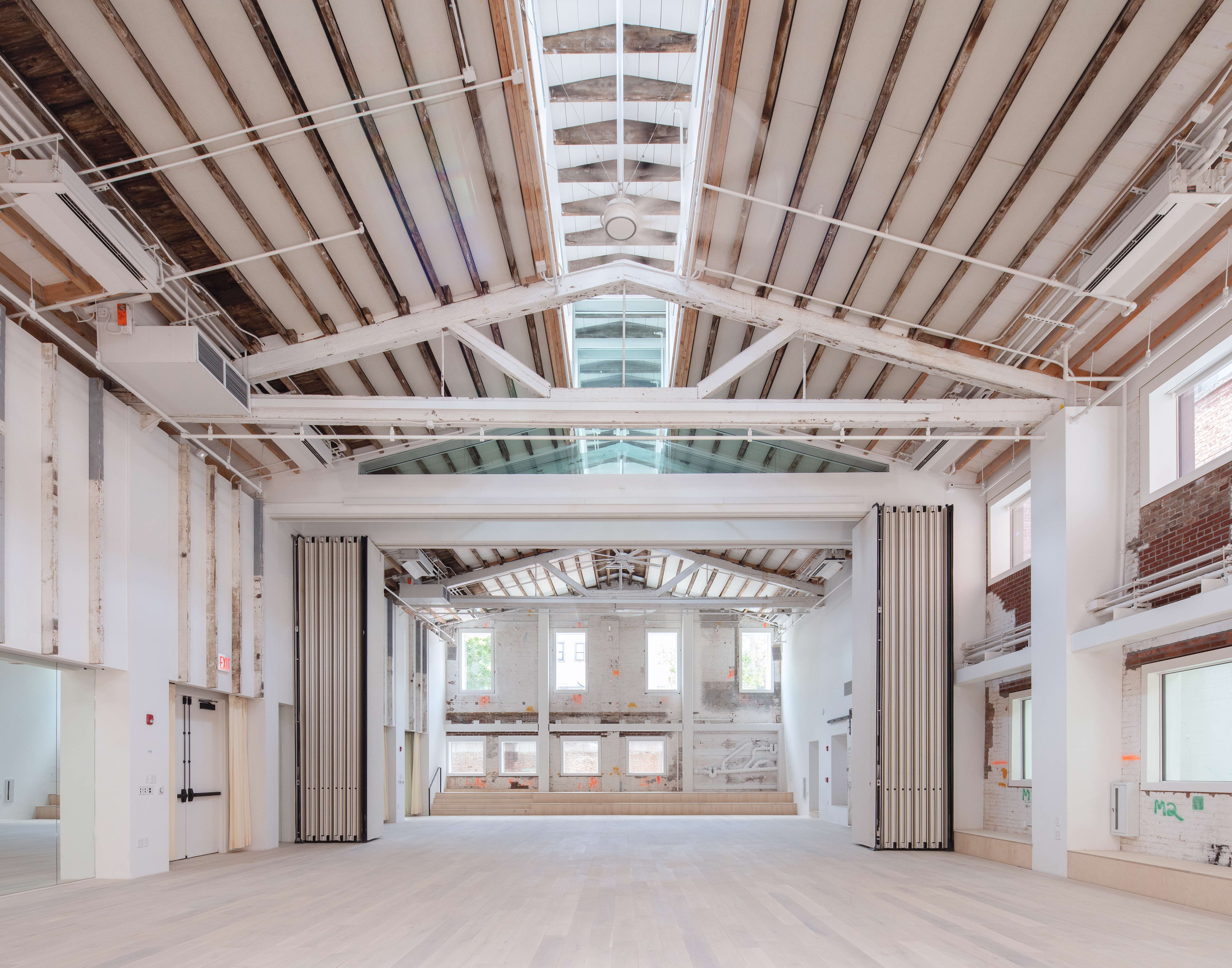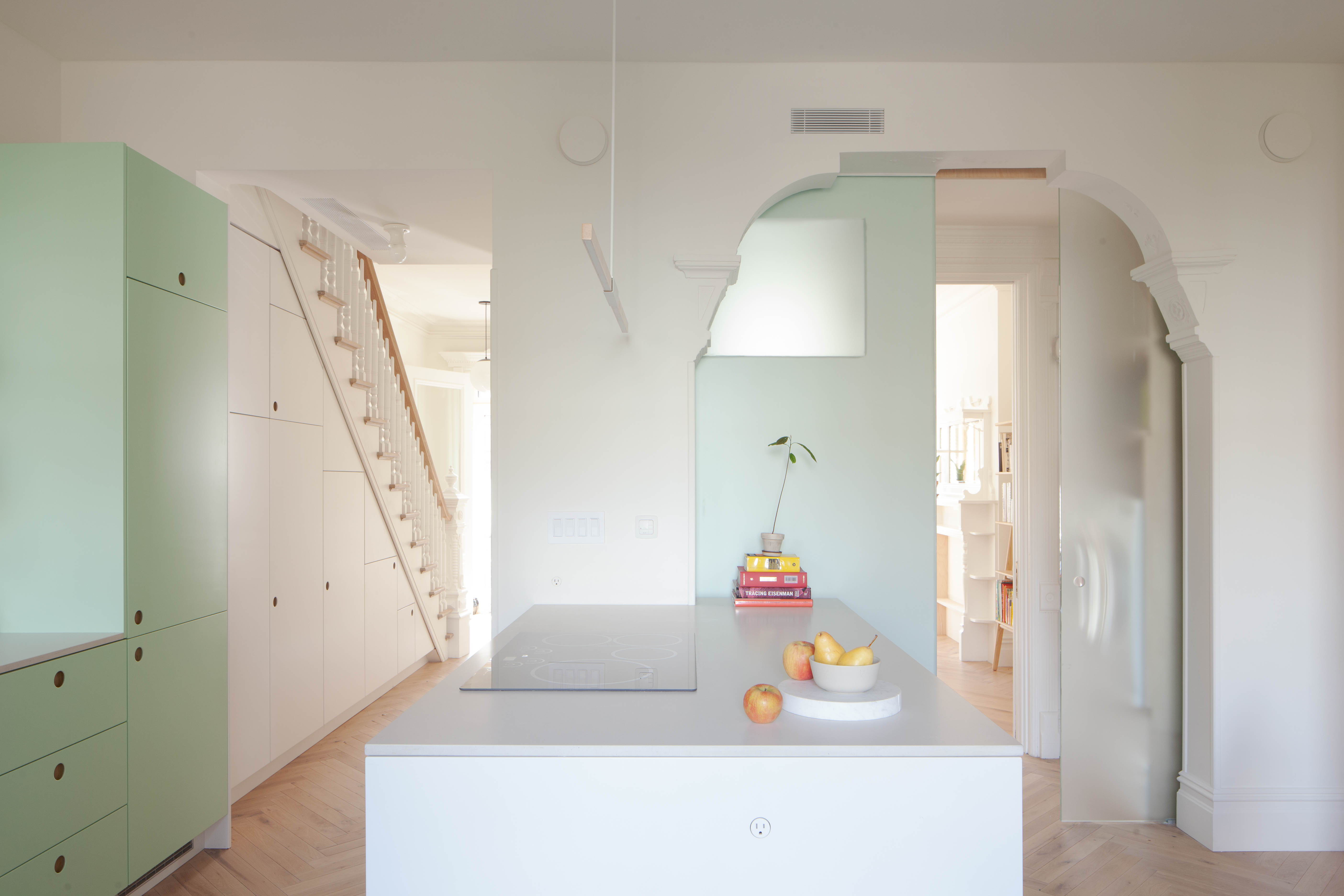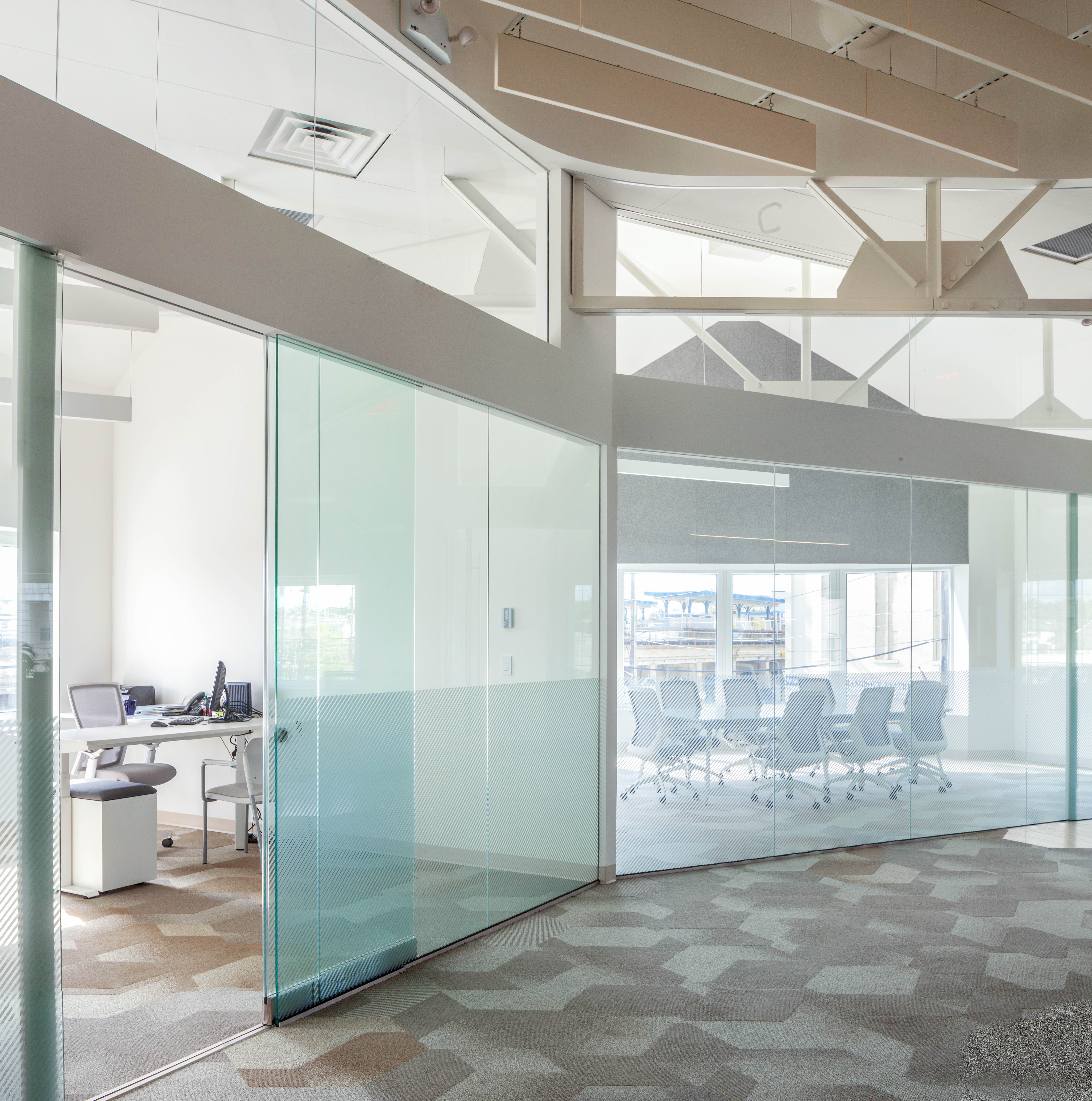Meet the Architect: CO Adaptive

In this edition of Meet the Architect, we get to know Ruth Mandl and Bobby Johnston, principals of the Brooklyn-based studio CO Adaptive Architecture. Ruth and Bobby founded CO Adaptive in 2011, with a focus on retrofitting existing building stock to create energy efficient, climate resilient, and beautiful environments. Throughout their design process, Ruth and Bobby—along with their teammates Leon Frazier, David Sidick, and Seneca Gray—are attentive to the functionality, durability, and embodied energy of materials. Their aim is to create buildings that minimize their carbon footprint and remain for decades to come.
This ethos has taken shape in adaptive reuse, low-carbon, and energy-efficient projects including, most recently, The Mercury Store and Bed Stuy Passive House. More on these and other projects below, along with our conversation with Ruth and Bobby about their daily rituals and what drives them.
Portrait by Donilee McGinnis.
From the Studio

The Mercury Store: The transformation of a 12,700SF former metal foundry in Gowanus into a light-filled developmental space for theater artists. This adaptive reuse project updates and opens the original double A-frame, timber-and-brick building by repurposing removed elements as the basis for new architectural features. Wood is the project’s dominant material: old longleaf pine timber is reconstituted and new insertions are cross-laminated timber (CLT). The project represents the first use of CLT on a fully commercial building in New York City. Read more about the project in Fast Company, ICON, and Dezeen. Photo by Naho Kubota.

BedStuy Passive House: Originally built in 1889, this three story townhouse was renovated to become a certified Passive House with the aim of retaining as much of the original character of the building as possible, while significantly reducing its operational energy use. The envelope was substantially insulated on the interior of the building and new triple-pane windows were installed. Operable exterior shades were tucked behind the existing brownstone, allowing them to disappear from view when open and mitigate solar heat gain when closed. Read more about the project in The New York Times. Photo by Peter Dressel.
Recycled Content Apartment: Tasked to create a family home on a tight budget, the studio reconfigured a 675 SF apartment to accommodate two bedrooms and ample space for entertaining. The material palette of exposed brick walls and reclaimed materials used in innovative ways created a unique and cost-effective space. A custom sliding counter, made of wood reclaimed from a bowling lane provides flexibility by shifting to enlarge the kitchen space or to serve as a big table for dinner parties. New York Apple boxes, typically used in film production, were repurposed as playful and budget-conscious upper cabinets. Photo by Peter Dressel.

High-Low Gradient Office: The restoration of a 1950s building in Lynbrook, Long Island transformed a large bank in the new headquarters for a Swiss freight logistics company. The renovation focused on all new and efficient systems alongside insulating the building envelope. New thermally high performing windows were installed throughout, with added attention to their sound properties, due to the proximity of the site to the Long Island Railroad. Photo by Peter Dressel.
Talking with Ruth and Bobby
What led you to consider architecture as a career?
Ruth: My grandfather was an architect, so I was exposed to the profession from a very young age. I was always interested in the arts, and so visits to his office (which was in the same house in which my grandparents lived in Vienna) - with the big drawing tables, the endless supply of pencils, colors, paints and stencils - illustrated a path for me in which my passion for drawing and art could become a profession.
Bobby: I was one of those strange kids that knew that I was passionate about architecture since I was 10 years old. I would draft floor plans and sections of houses that were inconspicuous from the street in my dad’s Generic Cad software, and then write elaborate business plans on how I would form various companies that would symbiotically work together. Unusual to most at that age, but these were things that got me excited about life. Maybe it was shaped by being an only child and having to find joy in the world of ideas instead of the physical world sometimes.
Do you have any daily rituals? Tell us about them.
Ruth: Leaving the office early enough to pick up our daughter Lucia from school, cook and eat dinner together, do bathtime and then read a good book for bedtime (right now we are reading Charlie and the Chocolate Factory) is an invaluable part of the day for me. I feel very lucky in being able to set my own hours and always make time for that.
Bobby: I like to get up around 5:30 and read The NYT with an espresso. This is usually followed by making Ruth a coffee and making our daughter breakfast, and then going for a run in our neighborhood. Running is really my time to reflect on the week ahead and I often find myself looking back at the people and circumstances that I am so very thankful for.
What de-stresses you?
Ruth: I recently started up painting again, it’s a really meditative process for me—mixing colors and layering towards a larger vision or image while I have time to process and think. I also enjoy getting out amongst some trees—even if it is just Forrest Park in Queens or Prospect Park in Brooklyn—nature has a way of making me breathe deeply and relax.
Bobby: As odd as it sounds, I love sitting down every week or so and closing all of my open browser windows, saving out for a new day—all of the open things I started to research but got stopped mid-process, and deleting all of the open files that contained prioritized lists of to-dos that have since been completed. I then get all of my system updates, restart, and my computer (and I) feel like a clean slate.
What’s been inspiring you lately?
Ruth: I recently finished reading The Overstory by Richard Powers and am still in awe of how he manages to re-shift the focus from the fast-paced, hurried human perspective onto the slow-moving, steady and nuanced timeline of trees and nature. That shift in frame of reference that he has so amazingly captured in his writing, is something I aspire to in my work.
Bobby: The Danish values around waste and re-use are something that I think we as a culture have so much to learn from. The Circular City Week annual festival in NYC is now in its fourth year and all of the talks by the organizations associated with this movement have been super pivotal in our practice’s work around how to improve design thinking for adaptive re-use.
Any guilty pleasures?
Ruth: Bobby and Lucia are both pretty early risers, but I love to sleep in. Even if that is just that extra half an hour in the morning, pulling the covers over my head while I hear them downstairs making toast or pancakes.
Bobby: I think it would have to be gummy bears. I have always loved them and now I find myself stealing small packets from my daughter’s seemingly endless halloween stash.
Tell us about a project you’re excited to be working on right now. Why?
Ruth: We are about to start construction on a very small Passive House in Queens, that is super exciting to me because we are pushing the boundary on how little we are removing in order to deeply insulate, get the airtight membrane in and greatly improve the performance of the building. The design itself came out really well - and I think it will be a little gembox of a house - but what excites me is the thought of it as a test case for honing in on a way to retrofit old buildings for high performance in a surgical way, without wasting too much of what is already there.
Bobby: One of my long term goals within our office has been to develop a construction management arm that can have a strong feedback loop with our architectural design. We’re happy to announce that we have officially signed on our first client to become design-build and as of this month we are launching CO Adaptive Building. This will give us greater control of the quality we need to achieve high performance projects that lower waste streams, while being able to reduce risk and cost due to our deep understanding of these projects.


